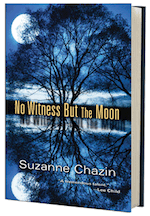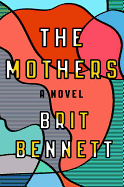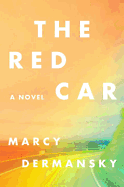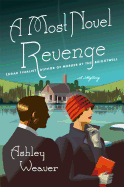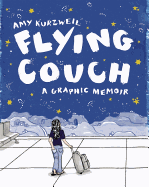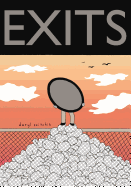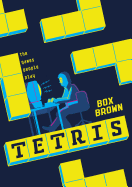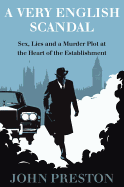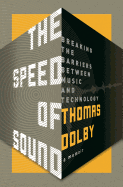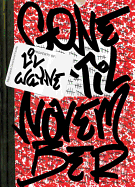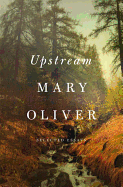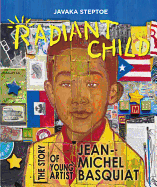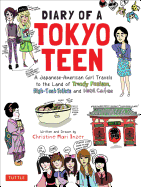 |
| photo: Phyllis Garito |
Suzanne Chazin is the author of three books in the Jimmy Vega mystery series, including No Witness but the Moon, just out from Kensington Books, and three previous novels that make up her Georgia Skeehan series, as well as dozens of short stories, personal essays and magazine articles. She has twice been the recipient of the Washington Irving Book Award for fiction. Her short fiction appeared in the anthology Bronx Noir, which won the 2008 Book of the Year Award for special fiction from the New Atlantic Independent Booksellers Association. A graduate of Northwestern University, Chazin spent more than a decade as senior editor at Reader's Digest, and has taught fiction and nonfiction writing at New York University, the New School for Social Research and Sarah Lawrence College. She was a 2012 writing fellow at the State University of New York at Purchase and is a frequent guest lecturer on writing at the Smithsonian Institute in Washington, D.C. Chazin has worked with several immigrant organizations in Westchester County, N.Y. She lives in Chappaqua, NY.
Suzanne Chazin always aspired to be a novelist. "I tried to write my first novel when I was 17, and I got 40 pages into it and said, 'I can't do this.' " Her first minor setback, combined with the belief that it's rare to support oneself as a novelist right away, caused her to study journalism in college. After that, Chazin worked as a freelance writer: "For more than a decade I was a writer for Reader's Digest. I really enjoyed my journalism career and my work has a journalistic feel because I try to be really accurate." But that grand dream to be a novelist stayed with her.
In her late 20s, Chazin again tried her hand at a novel. This time she succeeded in surpassing her previous record of 40 pages. She made it about half way before throwing in the towel. Still, she wasn't deterred. "I kept coming up with these different ideas. I was still working at Reader's Digest and my editor said to me, 'You're always trying to write about people you don't know anything about. Why don't you write something you know?' " As with many individuals, Chazin felt her life was mundane, and she didn't know anything or anyone exciting enough to write about. When her editor pointed out she was married to a New York firefighter, Chazin still didn't think this was a workable idea. "He's a man and I'm a woman." Simple enough, write about a female firefighter. "But there are so few... oh!" And the idea for Georgia Skeehan, a New York fire marshal, was born.
"I started the series before 9/11 and people said, 'Wow, this is novel and interesting to have firefighters and put them at risk this way.' " That sentiment didn't remain after the national tragedy, though. Instead, readers viewed the books as exploitative, and Chazin grew increasingly uncomfortable writing them. However, she was three books in and still had a fourth under contract for the series. While the country was reeling from the shock of terrorism, Chazin was dealing with her own personal life changes: her mother was dying and her daughter was born. She completed that fourth book, but it never even found an agent.
Chazin continued writing short works, ghost writing and freelancing, but she lacked the inspiration that would spark a new novel. "I decided that I was going about things wrong so I sat down and I asked myself, 'Suzanne, don't even think about writing, what is it you care about in this world?' " The answer came from her walks by the Mount Kisco train station. "I would see day laborers lining up in the bitter cold in just hoodies. I did not and still do not speak Spanish, but I wanted to talk to them, wanted to find out about their lives." Chazin wasn't thinking in terms of an idea for a novel, though. Instead, her journalism background drove this newfound passion. "I decided I would work at the [local immigrant center] as a volunteer, and then I would approach the director and say, 'I'm a journalist, if you could pair me up with a translator, I will tell these people's stories in their own voices.' " At the onset Chazin's idea was well received.
"For the next couple of years I sat down with the people and through translators I heard the real stories, these incredible stories of triumph and tragedy, unbelievable, amazing stories." But they weren't what the center director was anticipating. "When I started the project I think they thought I was going to write a bunch of stories like 'I am an American...,' 'America is a great country... I'm having a wonderful experience....' 'It's great to be in America.' " But the stories Chazin compiled were the real, grueling experiences. "[The director] looked at [the compilation] and she said, 'There's no way I can put these stories out there. These are very true but these are stories people in the larger community don't necessarily want to hear.' So she pulled the plug on the project. I thought that was the end and I was pretty crushed." But stepping back, Chazin had a realization. "You know what? I'm a mystery writer, and I am a fiction writer. How about if I try to tell these stories in fiction?" Traveling a very different route than she did with her Georgia Skeehan novels, Chazin arrived at the Jimmy Vega series.
In No Witness but the Moon, book three of the series, Chazin follows her style of blending an important issue in the immigrant community with conflict in the life of her police officer protagonist. She wanted to address the influx of unaccompanied children crossing the border that resulted because their parents currently in the United States feared their options being cut off permanently. But Chazin felt she needed to deliver the idea with a twist, because this series is about suburban America. "I had to be very careful to not have a story about a girl traveling from Honduras. That would take the story away from where it belongs. I had to find a way to bring in the trauma of what this girl had experienced and her readjustment but also not really deal with the journey."
The other major element of No Witness but the Moon is a killing by a police officer. When Chazin began considering this plot line, she wasn't sure she could go through with it. "The first time I thought about the idea, I got really scared. I was like 'No, I love Jimmy. Jimmy would never shoot someone like that.' But, the more you say the world never as a writer, the more intriguing it is. You think, 'okay, I just put him in the worst possible situation I can put him in, let's explore that.' " And explore it she does. "I read a book written by a police officer who had been through two shootings that were ruled justified. I'd also looked at the stages of grief and PTSD and what happens to people in those situations. I know Jimmy's a really good man, and I know that the death of this man will play on him. So I decided to take him through the stages of grief. He goes through each of the stages and in each stage he's saying, 'I'm really fine.' Until finally he realizes he's not fine. And I think when he goes to see Dr. Cantor, it becomes apparent to him how deeply messed up he is. Ultimately I wanted to take a good cop and say, 'look what it feels like to be a good cop in this situation. Look what it's doing to this man.' That's what I want people to see. As I want the readers to read the books and feel differently about immigrants, I guess I would like them to see the police officer's perspective, too."
A good deal of life's experiences--ups and downs--shaped the writer Suzanne Chazin is today. Looking back, she sees the evolution, "I think every writer starts out wanting to write the great American novel. I think every writer loves words--I know I do--and wants to cram in as many amazing words and images as they can. It's like that little kid wanting to take that blank page and draw all over it. As I went along, I discovered as much as I love words, what I'm trying to do is communicate. It doesn't matter how beautiful your phrase is--that's nice and all--but ultimately the reader has to feel that you've told them something, you entertained them, you inspired them. It's what the reader feels, not what the writer gives. So I changed from being a writer looking at the mirror to a writer looking out the window. I'm really trying to look at the world and give somebody else something worth reading. Or something someone will want to pick up one day even when I'm not around anymore." --Jen Forbus

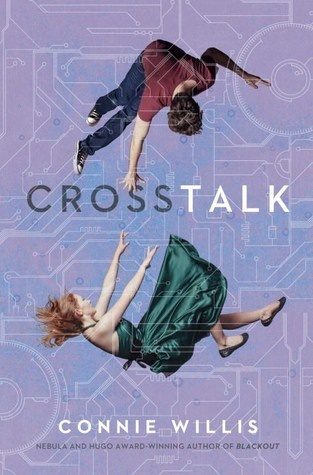 Hardly anyone's written about the funny side of suddenly finding yourself telepathic--or about the romantic complications which might ensue. Which brings me to the other reason I wanted to write Crosstalk. Telepathy abounds in fantasy and science fiction, but almost nobody has set a telepathy story in the here and now, in the middle of our already oversharing social media society. What would happen if you added an even more efficient form of communication? How would it change things?
Hardly anyone's written about the funny side of suddenly finding yourself telepathic--or about the romantic complications which might ensue. Which brings me to the other reason I wanted to write Crosstalk. Telepathy abounds in fantasy and science fiction, but almost nobody has set a telepathy story in the here and now, in the middle of our already oversharing social media society. What would happen if you added an even more efficient form of communication? How would it change things?


